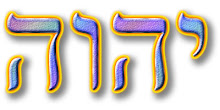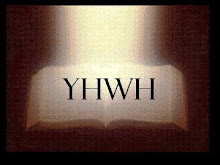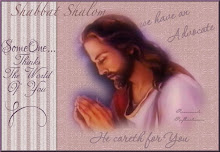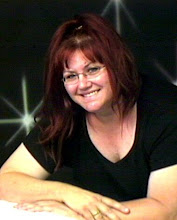This year something very special is going to happen on Nissan 14 or April 8, early in the morning. Every 28 years there is a special blessing...it happens after sunrise and it is a blessing to God for creating the sun. This is the exact time and day of the creation of the sun, so that is why it is very special.
I think you will find this very interesting and amazing.
As always, I am amazed at God for His goodness...and His revelation knowledge...I am thankful to Him for He is so good. His love and mercy endures forever!
Birkat HaChammah: The Blessing of the Sun
By Aaron Eby
A certain traditional Jewish ceremony has been in the news and blogs lately, known as Birkat HaChammah, or the Blessing of the Sun. This blessing is recited on an extraordinarily infrequent basis: only once every 28 years! The last time it was recited was 1981, which means that this is the year for the blessing to come around again.
If you have heard of this blessing for the first time this year, it may have aroused your suspicion. Is it legitimate, or some weird idea out of nowhere?
Good news: the blessing is not pagan, new age, magical, astrological, or even kabbalistic. The origin of the blessing is at least from the Talmudic era (c. 200-500 CE), although it could be earlier. It is possible that the blessing existed in the days of the Master and the apostles.
The idea behind the blessing is simple. The universe is comprised of a wide variety of cycles. From earth, those cycles appear as day and night, the phases of the moon, the courses of planets through their backdrop of stars, the changing of the seasons, etc. Many practices in Judaism are connected with these cycles, such as the daily prayers, the new moons, and the yearly holidays. This corresponds with God's intended purpose: "let them be for signs and for seasons, and for days and years" (Genesis 1:14).
The 28 Year Cycle of the Sun
Like the moon and planets, the sun itself can be seen as going through a cycle. Throughout the year, the sun's position in the sky changes, corresponding with the variety of seasons. There are four milestones in these fluctuations: the two solstices (winter and summer) and the two equinoxes (autumn and spring).
One Jewish tradition holds that the sun was created in the position of the spring (vernal) equinox. Thus, each spring, the sun completes a yearly cycle.
The Torah (Genesis 1:14-19) teaches that the sun was created on the fourth day. The fourth day of the week is the period from Tuesday evening through Wednesday afternoon. Once in seven years, the spring equinox occurs during that period of the week. So in a sense, every seven years, when the spring equinox occurs on the fourth day, we can consider the sun as having completed another, larger cycle.
The day can be divided into four parts: evening, night, morning and afternoon. According to Jewish tradition, the sun was not only created during the fourth day, but specifically the first part of the day, that is, the evening. The evening of the fourth day of the week corresponds with Tuesday evening.
Each year, the exact moment of the equinox could occur in any of those four parts of the day, adding a factor of four to our cycle. When all three of those factors coincide (the spring equinox of the year, the fourth day of the week, and the evening part of the day), we could consider the sun as having completed a full cycle, bringing it back to its original point at the time of creation.
This cycle occurs once every 28 years, which makes sense if you think about it:
Spring equinox: 1 day each year
Fourth day: 1 out of 7 days of the week
First part of day: 1 out of 4 parts of the day
1 year × 7 × 4 = 28 years.
The Blessing
The blessing itself is not uncommon. Like most blessings in Judaism, it begins with the phrase "Blessed are You, O LORD, our God, King of the universe." While the name of the blessing is "the blessing of the sun," we don't actually bless the sun, we bless God.
The conclusion of the blessing is "who makes the work of creation." It is the same blessing recited when witnessing other natural phenomena in the world, such as lightning. It is a simple acknowledgment of God as creator.
If you have ever participated in a Kiddush Levanah ceremony (a worship service that acknowledges the arrival of a new lunar month), you will find that Birkat HaChammah has strong parallels.
This one-line blessing seems anti-climactic for an event that takes place only once every twenty-eight years. In relatively recent history, different rabbis and scholars have proposed more lengthy services, which mainly involve recitation of certain Psalms and other pertinent passages in the Scriptures. But the basic one-line blessing is all that is needed to participate in the event.
Even though the equinox occurs in the evening, the blessing is recited in the morning after the shacharit prayers. On that day, people make extra effort to recite the morning prayers at the earliest permissible time.
The Symbolism of Birkat HaChammah
Birkat HaChammah does not have any inherent symbolism, except to say that a natural cycle has occurred, which prompts us to bless the Creator. But on the other hand, it is very easy to draw out symbolism from the ceremony. In fact, it is so easy to draw out symbolism that the ceremony reflects whatever community or individual recites it. To environmentalists, the blessing has a message of global warming or conservation. To mystics, the ceremony spurs deep and esoteric ideas. To rationalists, the ceremony is naturalistic. To Messianics, the ceremony is ripe with Messianic imagery.
Consider this: since the ceremony marks the return of the sun to its original position at the time of creation, it can be seen as a token for a return of the created world to its original, perfect condition. This is what will occur with the ultimate messianic redemption. This ceremony always occurs in the month of Nisan, which is called the month of redemption. It is the month of the year that God redeemed the Israelites from slavery in Egypt, and in some opinions, it is the destined time of the future redemption (b.Rosh Hashanah 11a).
Also of interest is the connection between the Messiah and sun imagery. In the Talmud (b.Sandhedrin 98b), a statement is made connecting this verse with the Messiah:
May his name endure forever,
his fame continue as long as the sun!
May people be blessed in him,
all nations call him blessed! (Psalm 72:17)
This entire Psalm has very strong messianic overtones, as it was written by King David for his son, Solomon. An earlier verse in the same chapter also contains sun imagery. This verse is often included in the liturgy for Birkat HaChammah:
May they fear you while the sun endures,
and as long as the moon, throughout all generations! (Psalm 72:5)
(One fascinating feature of this Psalm is that it contains "encoded" within it both the names "Messiah" and "Yeshua.")
It is worth remembering that Joseph, who strongly foreshadowed the Messiah, had a dream in which the sun bowed down to him (Genesis 37:9).
Also of note is the identification between the sun and light and the Messiah himself. The prophets speak of the "sun of righteousness" (Malachi 4:2) and tell of the redemption and the Messiah in terms of light. The apostles frequently connect the Messiah to light and brilliance.
One amazing moment when this connection was exemplified was the transfiguration, when "his face shone like the sun" (Matthew 17:2). Perhaps the transfiguration is a good topic of study for the event. The transfiguration always makes me think of this beautiful passage from Yalkut Shimoni (a late compilation of aggadic midrash):
At the time when King Messiah comes, he will stand on the roof of the Holy Temple, and he will proclaim to Israel, saying: "Humble ones! The time of your redemption has arrived! And if you don't believe me, look at my light which is shining upon you!" (Yalkut Shimoni Yeshayahu 60:499)
This Year's Unique Timing
This year, the ceremony of Birkat HaChammah remarkably coincides with the day prior to the Passover seder (April 8). This is the day of the year when we burn our leftover chametz (leaven), and when the Temple stood, it was the day when the Passover lambs were slaughtered. Since Birkat HaChammah is based on a solar cycle rather than a lunar one, the date of Birkat HaChammah on the Hebrew calendar varies, and the correspondence between these two events is rare. Many people feel that this connection has messianic or redemptive implications.
(Some of you may have noted that the spring equinox this year has already occurred. The discrepancy is due to the fact that when this tradition first developed, the Sages chose the simpler and less accurate Julian calendar for reckoning the equinox. This has slowly shifted and become less and less accurate over time. But as this event is more symbolic rather than astronomical, it is not really a concern.)
Once in 28 Years
I want to really encourage you to participate in this ceremony. Try and gather a minyan if at all possible. Think about it: if humanity continues on its current path, the next time the opportunity for this blessing will occur, it will be the year 2038. At that time, you will probably have children about your age now. Most likely, many people reading this will not be alive. Many new people will have been born. Technology will be dramatically different. It is impossible to predict what the political world will be like.
Due to advances in communication and education, this Birkat HaChammah has the potential to be the most widely observed in all of history. Are you going to join the worldwide chorus?
About the Author: Aaron Eby writes for messiah magazine and other FFOZ publications. He is also the author of the forthcoming Siddur, as well as the recently published Hebrew lesson DVD.
The encoding.....
The Hebrew word for Messiah is Mashiach, spelled mem-shin-yod-cheit (משיח).
A rabbi explained that the initial letters describe the beginning of a person's life, but the final letters describe the end. Mashiach is supposed to come at the end, right?
There was only one verse in all of the Hebrew Scriptures that contained the sofei tevot code for Mashiach. It contained it as final letters in Psalm 72:5:
May they fear you while the sun endures, and as long as the moon, throughout all generations!
The word Mashiach appears as the final letters of the phrase עם שמש ולפני ירח (iM shemeSH velifneI yareaCH), translated here as "while the sun endures, and as long as the moon." However, the Hebrew here is terse, and a literal translation of the phrase would be "with the sun and before the moon."
If you take look at the entire Psalm (and please do), you will see that it is intensely messianic. It is a highly appropriate Psalm to contain the one and only code for mashiach. Since it opens with "to/of Solomon," the last verse seems to indicate that King David wrote it for his son. The Talmud (b.Sanhedrin 98b) directly associates verse 17 of this Psalm with the Messiah.
Looking at that exact same phrase.....
עם (Im) - Ayin.
שמש (SHemesh) - Shin.
ולפני (Velifnei) - Vav.
ירח (Yareach) - Yod.
The initials of this phrase are the same letters in the name Yeshua, albeit in a different order. In this case, the letters of his name are rearranged so that "the last is first, and the first is last!"
Go here for a 'Seder Birkat HaChammah' or 'The Blessing of the Sun' PDF guide....
http://ffoz.org/blogs/_misc/birkat%20hachammah%20transliteration-english.pdf
I have one I ordered that is according to Chabad custom but this one in PDF is simple and very beautiful and I think you will enjoy it.
As always, I only want the best for you.
To any and all who read this, much love to you in and through our Savior and soon coming King, Yeshua...His servant, gloria
Subscribe to:
Post Comments (Atom)











No comments:
Post a Comment